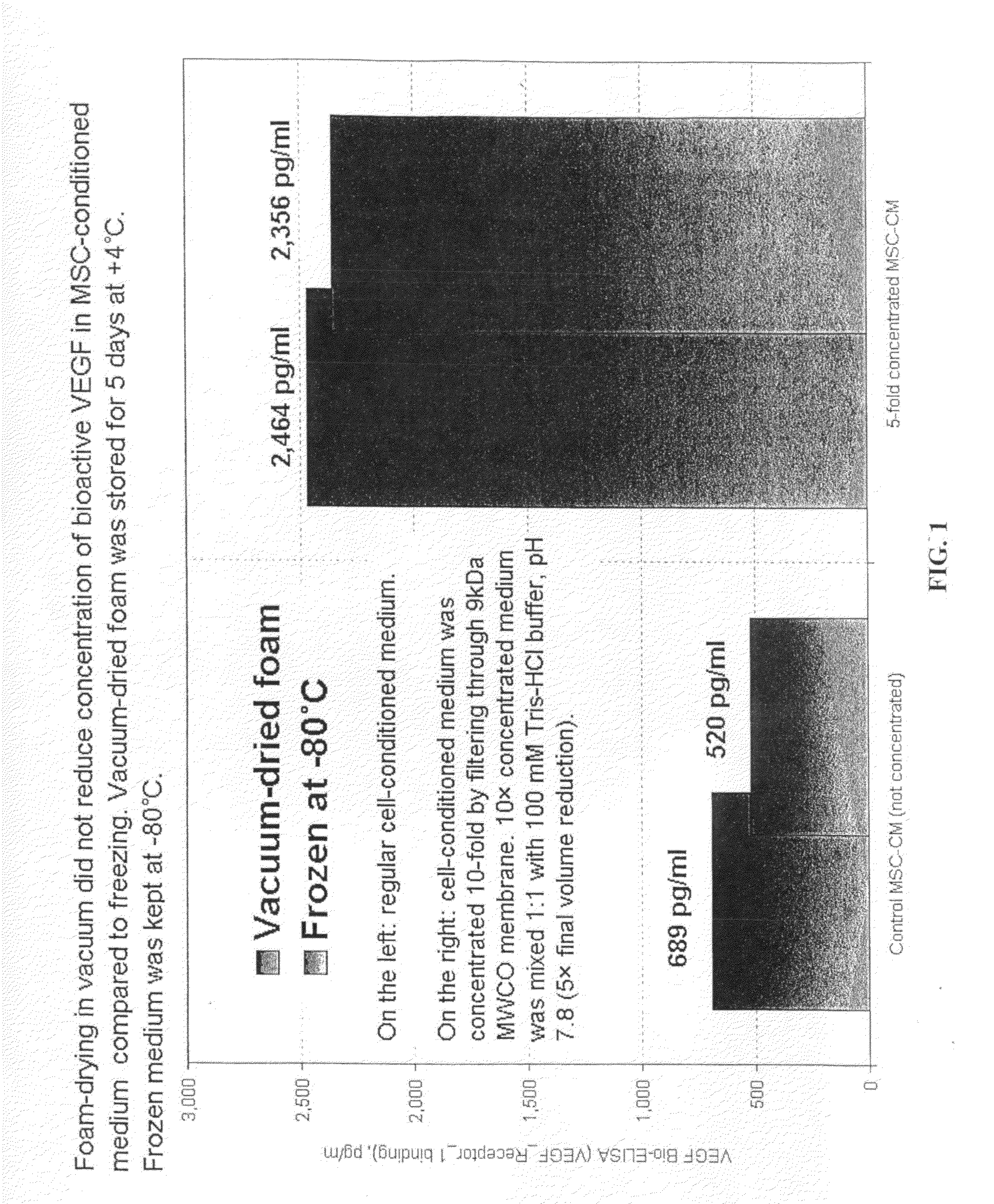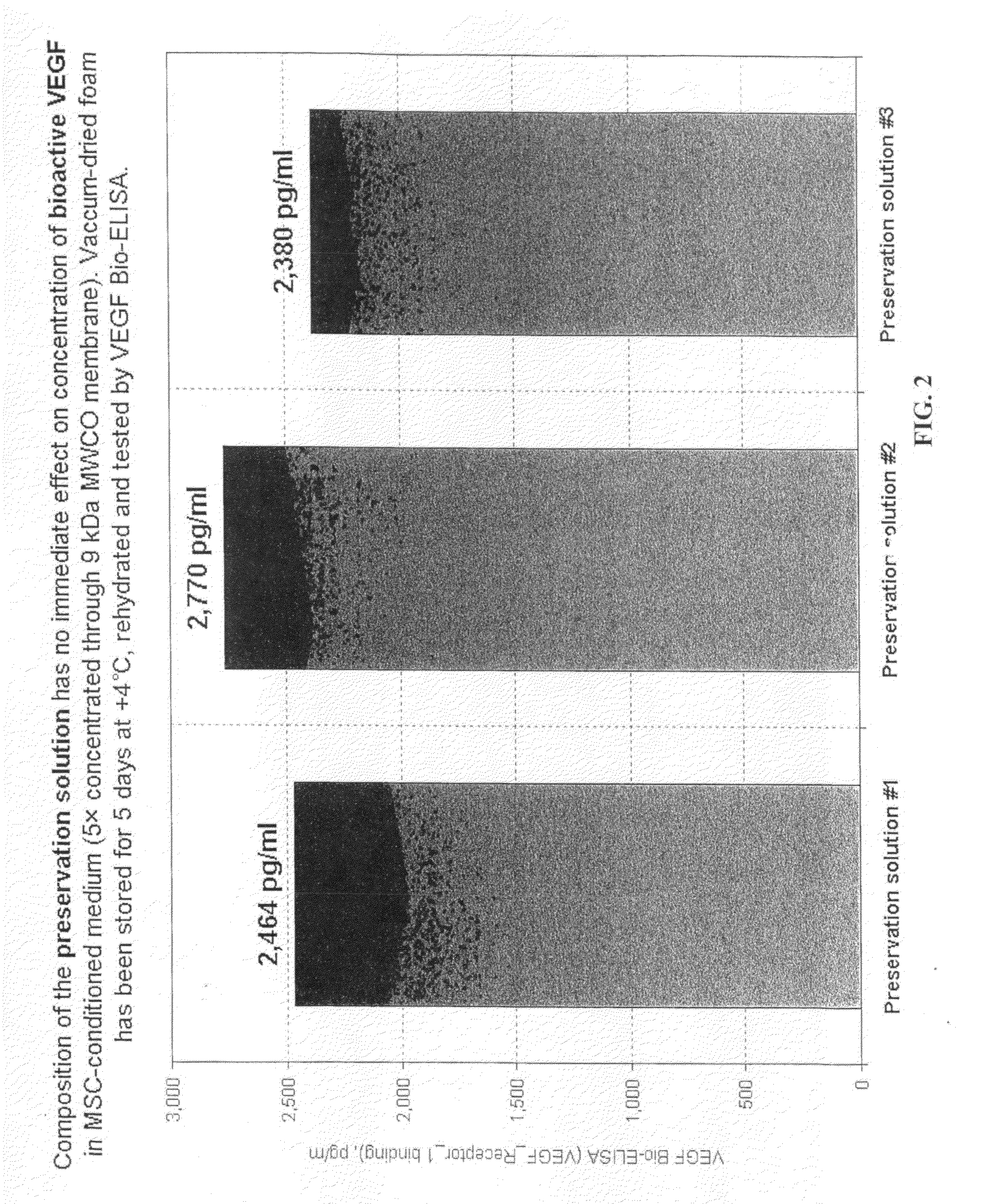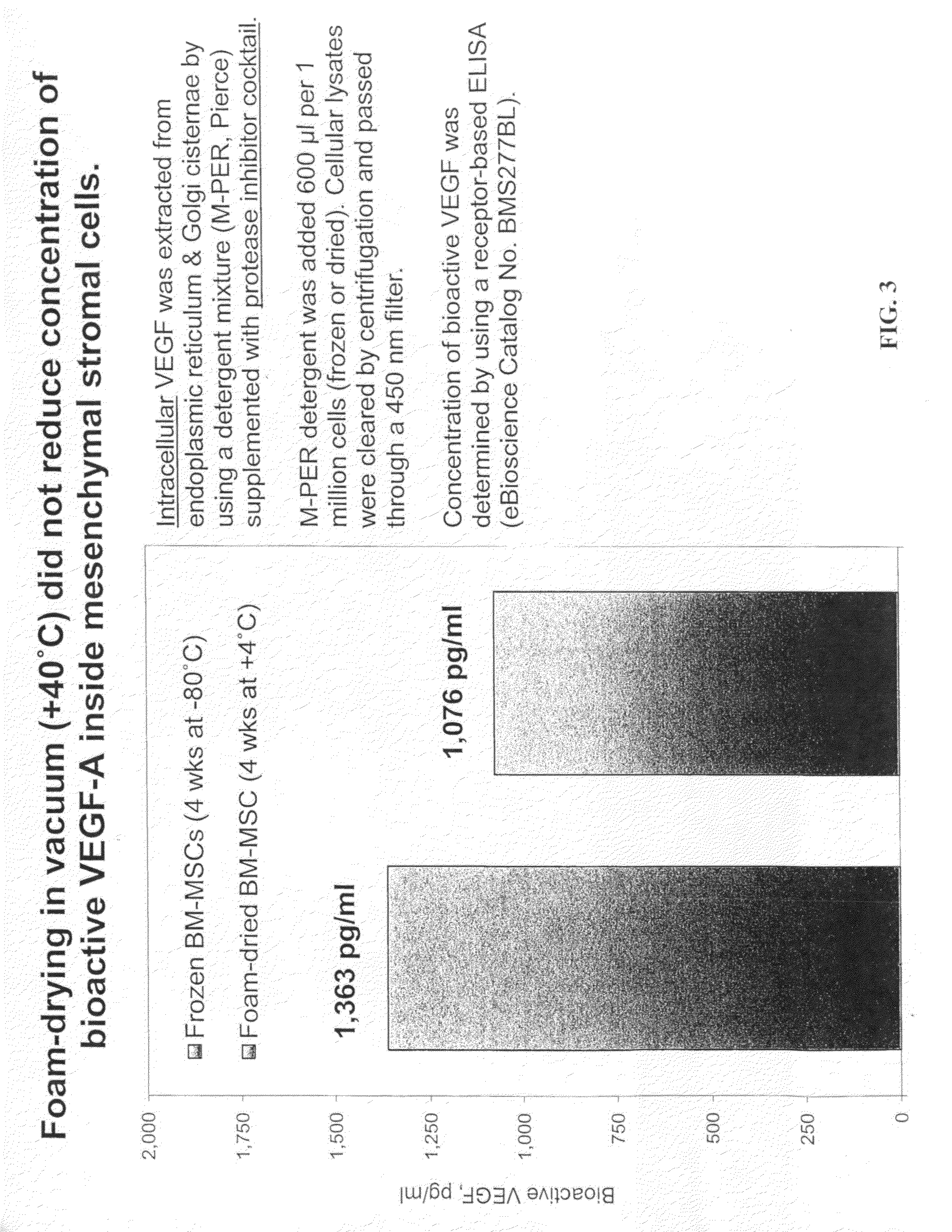Vaporized Stem Cell Derivatives for Topical and Other Therapeutic Uses
a technology of stem cells and derivatives, applied in the field of stem cell therapy, can solve the problems of skin thinning and general degradation, adverse effects on skin, and visible signs of skin aging and damag
- Summary
- Abstract
- Description
- Claims
- Application Information
AI Technical Summary
Problems solved by technology
Method used
Image
Examples
example 1
Seeding Human Bone Marrow MSC for Cytokine Accumulation
[0043]1a. Collection of Sample
[0044]Human bone marrow was collected from consented donor. Plasma, extraneous material (bone fragments, fat), and erythrocytes were removed from the BMS aspirate. The obtained suspension of nucleated cells was plated in plastic dishes in growth medium DMEM / F12 (1 / 1) (Gibco, Grand Island), containing 20% fetal calf serum (HyClone, USA), 2 mM glutamine, and antibiotics. The plating density of the primary cell suspension was 500,000-1,000,000 cells / cm2 on average. Cells were cultured under standard conditions (at 37° C. in an atmosphere of 5% CO2). After a day, unattached cells were removed, and attached cells were incubated to 70-80% confluence, which generally takes from 10 to 20 days. The culture medium was replaced every 3 days.
1b. Cell Culture
[0045]The mononuclear cells were isolated from fresh specimen using Histopague and seeded into Petri dishes. The cells were expanded in culture medium (DMEM...
example 2
Preservation of Human VEGF from MSC-Conditioned Medium
[0051]Human bone marrow mesenchymal cells (BM-MSC) were purchased from Lonza and seeded into two triple-layer flasks (250,000 cells / 500 cm2 / 125 ml / flask→500 cells / cm2) and cultured for 7 days in 21% oxygen without changing the medium (DMEM-F12+15 mM HEPES+15% FBS+FGF2+40 mg / L heparin+ITS+GlutaMax). Conditioned medium was collected (˜250 ml).
[0052]Cells were removed from the flasks using Tryp-LE protease. 27,000,000 cells were harvested from 2 flasks. Cells were divided into 2 equal parts and grown for five passages under 21% oxygen in DMEM-F12+15 mM HEPES+15% FBS+FGF2+40 mg / L heparin+ITS+GlutaMax.
[0053]250 ml of the conditioned medium (MSC-CM) was centrifuged to remove cell debris, and then passed through sterile filter (200 nm pore size). MSC-CM (80 ml) was concentrated using Pierce membrane cones (9 kDa, 20 ml, Pierce P / N PI89885A, 25 / pack, $250). The reason for using 9 kDa membrane cones was to increase VEGF concentration and ...
example 3
Preservation of Human MSC
[0058]BM-MSC that were removed from the flasks and separated from Example 2 were separated into two groups. Group 1 cells were suspended in 10 ml of 20% DMSO in Hanks' BSS, incubated on ice for 30 minutes to increase intracellular concentration of DMSO, and transferred into −80° C. for storage. Group 2 cells were pelleted at 300×G, and resuspended in approximately 0.5 ml of preservation medium #1 (3-oxy-methyl-D-glucose+gelatin) and dried in vacuum according to the method disclosed in U.S. Publication No. 2008-0229609, the disclosure of which is incorporated herein by reference.
PUM
| Property | Measurement | Unit |
|---|---|---|
| Tg | aaaaa | aaaaa |
| concentration | aaaaa | aaaaa |
| concentration | aaaaa | aaaaa |
Abstract
Description
Claims
Application Information
 Login to View More
Login to View More - R&D
- Intellectual Property
- Life Sciences
- Materials
- Tech Scout
- Unparalleled Data Quality
- Higher Quality Content
- 60% Fewer Hallucinations
Browse by: Latest US Patents, China's latest patents, Technical Efficacy Thesaurus, Application Domain, Technology Topic, Popular Technical Reports.
© 2025 PatSnap. All rights reserved.Legal|Privacy policy|Modern Slavery Act Transparency Statement|Sitemap|About US| Contact US: help@patsnap.com



